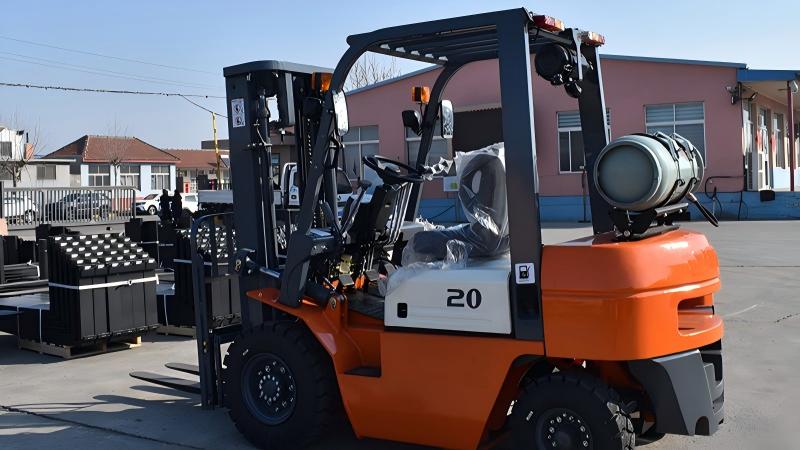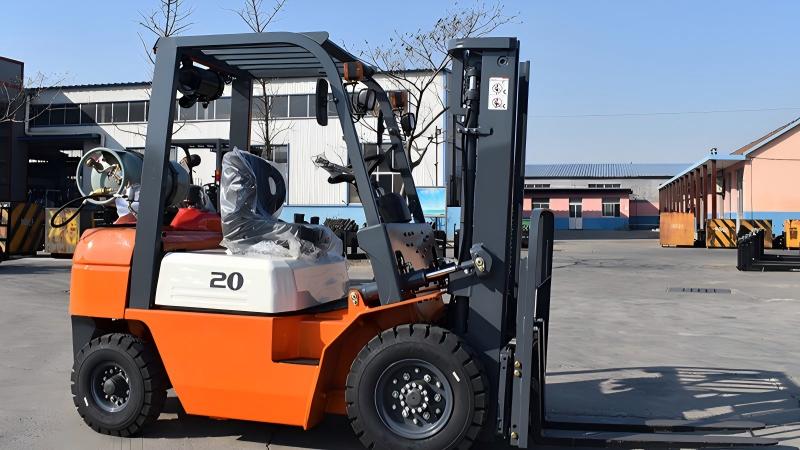The maintenance regimens for LPG (Liquefied Petroleum Gas) and diesel forklifts, while sharing some common ground in fundamental mechanical checks, diverge significantly due to the distinct nature of their powerplants and fuel delivery systems. A diesel forklift engine is a compression-ignition workhorse, built for high torque and durability, but it demands rigorous attention to its fuel injection system and emission components. Maintenance involves regular and meticulous care of diesel particulate filters (DPFs) and selective catalytic reduction (SCR) systems in modern Tier 4 final engines, which are prone to clogging if operated improperly, especially in low-load scenarios. The fuel system itself is high-pressure and precision-engineered, requiring clean, water-free diesel to prevent costly injector or pump failures. In contrast, an LPG forklift operates with a spark-ignition engine, similar to a gasoline engine but often running cleaner. Its primary maintenance differentiator lies in the LPG fuel system, which includes the tank, vaporizer/regulator, and carburetion or fuel injection components. The vaporizer-regulator is a critical part that converts liquid propane into a vapor and reduces its pressure; it must be routinely inspected for leaks and diaphragm integrity. Furthermore, because LPG burns cleaner than diesel, it results in less carbon buildup and sludge within the engine oil and combustion chamber. However, this cleaner operation places a greater emphasis on the ignition system; spark plugs, ignition wires, and distributors require more frequent inspection and replacement compared to a diesel engine, which has no spark plugs at all. Thus, from a high-level perspective, diesel maintenance is heavily skewed towards managing high-pressure fuel and complex emission after-treatment, whereas LPG maintenance focuses on the integrity of the pressure-reduction fuel system and the health of the ignition components.
Delving deeper into specific maintenance tasks, the differences in engine oil, filter changes, and cooling system care become apparent. For a diesel forklift, the engine oil is subjected to significant contamination from soot, a natural byproduct of the diesel combustion process. This soot can lead to increased oil viscosity and accelerated engine wear, necessitating shorter oil and filter change intervals compared to LPG, often by a factor of 25-50%. The oil itself is also typically a specific, higher-detergent diesel-grade oil. The air filtration system is equally critical for a diesel engine, as its turbochargers (common in modern models) are extremely sensitive to dust ingestion, which can lead to catastrophic and expensive failures. Consequently, air filter inspection and replacement are paramount. For an LPG forklift, the oil tends to stay cleaner for longer due to the absence of soot, allowing for extended drain intervals and potentially reducing long-term fluid and labor costs. However, a unique concern with LPG is its tendency to cause oil dilution if the engine is frequently operated at low temperatures or if there are issues with the fuel mixture; raw fuel can slip past the piston rings and contaminate the oil sump. Both forklift types share common maintenance needs for the cooling system, but the LPG system adds another layer: the vaporizer-regulator is often cooled by engine coolant. A failure in the cooling system can therefore not only lead to engine overheating but also cause the LPG vaporizer to freeze and malfunction, preventing the forklift from operating. This interdependency adds a unique point of potential failure not present in the diesel system.
The long-term operational costs and component wear profiles present a compelling contrast between the two power sources, heavily influenced by their maintenance needs. A diesel forklift, with its robust construction, is renowned for its longevity and resilience in harsh, high-mileage applications. However, this durability comes with the caveat of potentially higher repair costs when components fail. The high-pressure common rail fuel system and complex turbocharger and emission control systems (DPF, SCR) comprise some of the most expensive parts on the machine. A single failed fuel injector or a clogged DPF requiring forced regeneration or replacement can represent a significant financial outlay. In contrast, an LPG forklift generally has a lower initial maintenance cost profile. The components of its fuel system—the regulator, mixer, and associated lines—are typically less expensive to repair or replace than their diesel counterparts. The absence of a DPF or SCR system eliminates a major source of potential downtime and cost. The primary long-term wear items are related to the ignition system and, similar to diesel, the core engine components like piston rings and valves. It is worth noting that LPG, being a dry fuel, can lead to increased valve seat wear over very long periods if the engine is not specifically designed or hardened for it, though this is less of an issue with modern engines. Therefore, while a diesel may last for more total hours, its maintenance events can be more costly, whereas an LPG forklift promises lower recurring maintenance costs but may have a slightly shorter overall engine life in extreme continuous-use cases.
Ultimately, the choice between an LPG and a diesel forklift from a maintenance standpoint is a strategic decision that hinges on the specific operational environment, duty cycles, and internal logistical capabilities. Diesel forklifts excel in outdoor, high-capacity, and continuous-use applications where their torque and fuel energy density are advantageous. Their maintenance schedule, while potentially more intensive and costly per event, is predictable and justified by their sheer durability and ability to handle heavy loads for extended periods. They are less suited for indoor use due to particulate and NOx emissions, even with modern filters. LPG forklifts, on the other hand, offer exceptional versatility as true indoor-outdoor machines, producing far fewer harmful emissions. Their maintenance profile is characterized by more frequent but generally simpler and less expensive tasks, such as spark plug changes and LPG system leak checks. This can make them ideal for operations with mixed-use profiles and for companies that may not have highly specialized diesel mechanics on staff. The decision matrix should therefore evaluate not only the direct costs of oil and filters but also the total cost of ownership, which includes potential downtime, component replacement costs, fuel price stability, and the environmental requirements of the workspace. A well-informed decision balances the raw power and long-life potential of diesel against the cleaner operation, versatility, and typically lower routine maintenance costs of LPG.
Post time:Nov.11.2025



